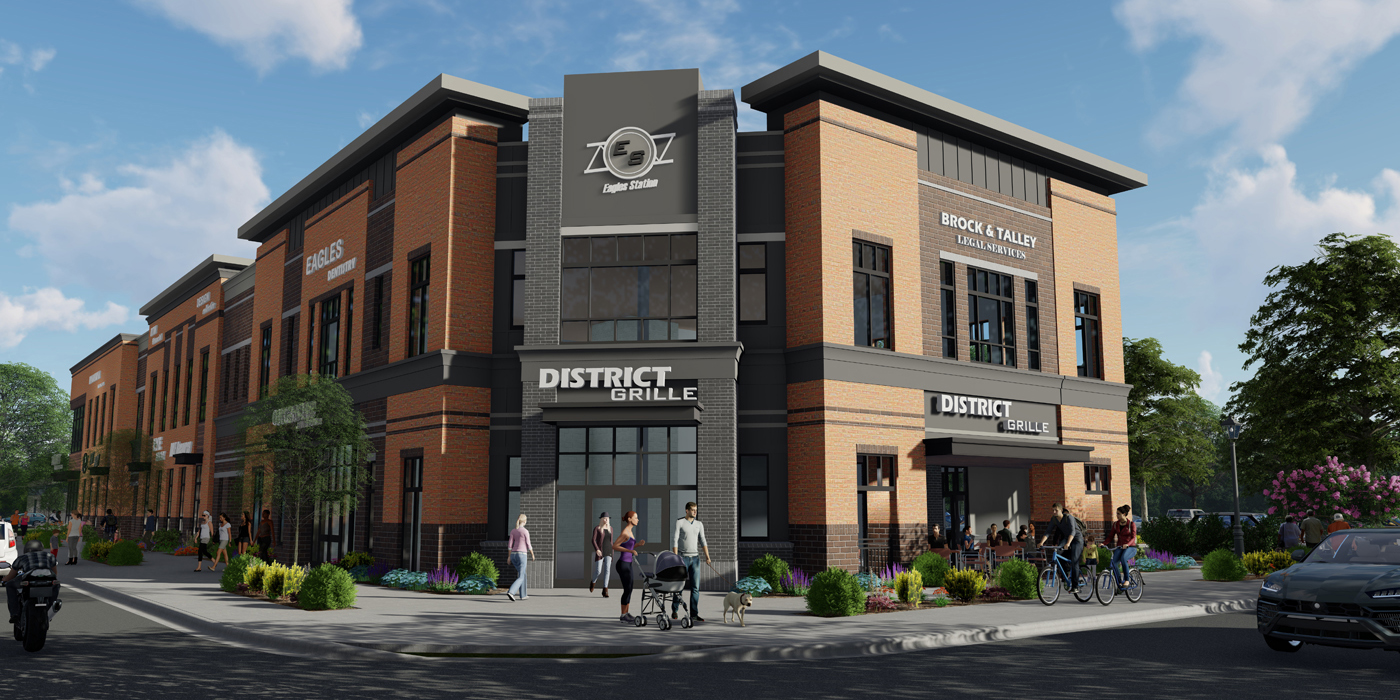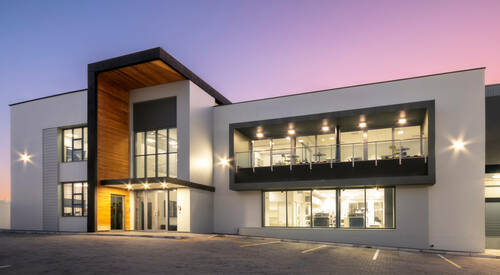Introducing the Comprehensive Services Offered by Commercial Architects for Modern Advancement
Commercial Architects serve a vital function in modern development jobs. They blend design aesthetic appeals with performance while adhering to regulative needs. Their proficiency expands beyond plain building and construction, including lasting practices and cutting-edge innovations. As they navigate complex zoning legislations, Architects collaborate with numerous stakeholders to bring visions to life. This multifaceted technique raises concerns about the developing function of Architects in forming modern-day areas and the effect of their work on future growths.
Recognizing the Function of Commercial Architects in Modern Developments
In modern metropolitan landscapes, Commercial Architects play an essential role in shaping useful and visual rooms that meet diverse service demands. Their know-how extends beyond plain layout; they browse complex zoning laws, developing codes, and environmental guidelines. By collaborating with customers, they determine details demands, guaranteeing that each project lines up with the client's vision while also thinking about sensible facets such as sustainability and cost-effectiveness. Commercial Architects are adept at incorporating cutting-edge innovations and materials right into their styles, boosting both the performance and power effectiveness of structures. They carry out detailed website analyses to evaluate the potential difficulties and possibilities presented by a location. Additionally, effective interaction with specialists and various other stakeholders is vital, guaranteeing that the job advances efficiently from perception to completion. Eventually, Commercial Architects are critical in developing areas that not only meet functional functions but also contribute to the total character and vibrancy of urban environments.
Principle Layout: Changing Ideas Into Fact
Principle design serves as a crucial stage in Commercial design, where cutting-edge style options arise from innovative thinking. This procedure counts on collaborative ideation, combining varied point of views to fine-tune and improve first principles. As ideas materialize, they change from abstract ideas into substantial architectural facts.
Cutting-edge Style Solutions
Transforming concepts into truth is the hallmark of innovative layout services in Commercial design. These remedies mix creativity with capability, addressing the unique demands of modern growths. By leveraging advanced technologies and sustainable practices, Architects craft rooms that are not only aesthetically attractive however likewise effective and adaptable. Emphasis on individual experience drives the design procedure, ensuring that atmospheres foster efficiency and cooperation. Each task gain from a customized technique, where concepts are thoroughly established to reflect the client's vision while thinking about future fads. Cutting-edge layout options additionally prioritize adaptability, enabling alterations over time as service needs advance. Eventually, these techniques enhance the general worth of Commercial spaces, making them pivotal in today's competitive landscape.

Joint Ideation Process
Collaboration works as the backbone of the ideation procedure in Commercial style, fostering creativity and technology amongst varied stakeholders. Architects, customers, designers, and area participants engage in dynamic conversations, making sure that all point of views are considered. This comprehensive technique permits the exploration of various design principles, encouraging special solutions that line up with the project's vision. Via workshops and conceptualizing sessions, concepts develop and fine-tune, transforming first principles into concrete designs. Technology additionally plays a pivotal duty, with tools such as Building Information Modeling (BIM) helping with real-time partnership and modifications. Ultimately, this joint ideation process not just improves the design result yet likewise grows a feeling of ownership and financial investment amongst all celebrations included, causing effective Commercial advancements.
Zoning Analysis: Browsing Laws and Compliance
As programmers commence on new tasks, understanding zoning regulations is vital to ensuring compliance and avoiding pricey delays. Zoning evaluation plays an essential duty in this procedure, as it includes examining regional zoning laws that dictate land use, building elevation, density, and setbacks. Commercial Architects possess the knowledge to browse these complicated policies, helping customers recognize permitted usages and any necessary variations.
Sustainable Layout Practices: Building for the Future
Sustainable design practices are significantly necessary in the domain of Commercial design, especially as ecological worries continue to escalate. Architects focus on eco-friendly materials, energy-efficient systems, and layout methods that lessen waste and environmental impact. Incorporating eco-friendly energy resources, such as solar panels and wind turbines, permits buildings to generate their very own power and lower reliance on fossil fuels.Furthermore, sustainable layout emphasizes the significance of indoor environmental top quality. This includes utilizing all-natural light, enhancing ventilation, and picking non-toxic products to improve owner health and efficiency. Green roofings and living wall surfaces are additionally preferred features that add to biodiversity and city cooling.Additionally, Commercial Architects usually integrate water conservation techniques, like rain harvesting and drought-resistant landscaping. With these innovative approaches, they develop rooms that not only satisfy contemporary requirements however likewise cultivate a sustainable future, attending to the expanding demand for liable growth in the modern-day world.
Project Monitoring: Ensuring Timely and Efficient Implementation
Efficient task management is crucial for making certain that Commercial style jobs are completed on time and within spending plan. This role incorporates a variety of obligations, consisting of the coordination of various stakeholders, timelines, and sources. Commercial Architects leverage their knowledge to produce detailed task plans that lay out crucial landmarks and deliverables, permitting systematic progress tracking.Regular interaction among staff member and clients is important, promoting openness and assisting in timely decision-making. Threat administration techniques are likewise employed to determine prospective difficulties early, enabling positive remedies to be developed. By making use of sophisticated task management tools, Architects can keep track of task efficiency in real-time, making changes as necessary to keep effectiveness.
Interior Decoration: Creating Functional and Visual Spaces
Inside layout plays an important duty in boosting both functionality and aesthetic appeal within Commercial areas. Effective area preparation can optimize operations and improve user experience, while visual design principles add to an aesthetically appealing setting - commercial architects. With each other, these components develop rooms that are not just sensible yet likewise motivating
Area Preparation Effectiveness
While taking full advantage of the utility of offered area, Commercial Architects prioritize room planning effectiveness to create both practical and visually pleasing atmospheres. This approach involves careful analysis of the spatial design to assure excellent use every square foot. Architects consider elements such as operations, accessibility, and all-natural light to improve use. By purposefully putting furniture, devices, and workstations, they promote motion and communication amongst customers, promoting productivity. In addition, zoning various areas for specific functions aids in taking care of noise and personal privacy, developing an unified atmosphere. Through efficient space preparation, Commercial Architects can transform restrictions right into opportunities, making certain that each space meets the varied demands of its residents while adhering to governing needs and sector criteria.
Aesthetic Layout Concepts
Aesthetic layout concepts play a crucial role in shaping settings that are not only functional however also aesthetically enticing. These principles direct Commercial Architects in producing areas that reverberate with customers while improving brand identity. Trick components include balance, percentage, and harmony, which straight from the source collaborate to develop a cohesive appearance. Color pattern and products are carefully selected to stimulate desired emotions and support the total theme. Furthermore, illumination plays a vital duty, affecting state of mind and presence while highlighting architectural features. By integrating these principles, Architects ensure that rooms are not just functional however also inviting and inspiring. Ultimately, efficient visual design cultivates a favorable individual experience, urging engagement and satisfaction in Commercial settings.
Cooperation With Stakeholders: Cultivating Effective Partnerships
Successful partnerships in Commercial design Look At This hinge on efficient cooperation with stakeholders, making certain that every voice is heard and valued. This joint method involves engaging various parties, consisting of customers, contractors, and area participants, throughout the layout and advancement process. By fostering open interaction, Commercial Architects can resolve concerns, gather understandings, and line up the project's vision with stakeholder expectations.The integration of diverse perspectives boosts creative thinking and technology, leading to even more useful and cosmetically pleasing styles. Normal conferences, feedback sessions, and workshops facilitate this dialogue, allowing Architects to adapt their strategies in action to stakeholder input. Furthermore, establishing trust with transparency and liability reinforces these collaborations, resulting in a smoother task execution.Ultimately, the success of modern-day developments relies on the Architects' capability to navigate and balance varying passions, developing a collaborative environment that advertises common goals and mutual success.
Regularly Asked Inquiries
Just How Do Commercial Architects Take Care Of Budget Constraints Throughout a Task?

What Kinds of Software Do Commercial Architects Frequently Utilize?
Commercial Architects frequently utilize software application such as AutoCAD for drafting, Revit for Building Details Modeling, SketchUp for 3D modeling, and task monitoring devices like Microsoft Task to boost cooperation and enhance operations throughout the style process.
Can Commercial Architects Assist With Obtaining Financing for Projects?
Commercial Architects can aid in getting funding for jobs by preparing thorough propositions, aiding to verbalize design visions, and supplying monetary projections that can improve the chance of securing required financing from financiers or financial organizations.
Just How Do Architects Ensure Security Throughout the Building Refine?
Architects ensure safety throughout construction by applying rigorous layout requirements, collaborating with engineers, performing normal site inspections, sticking to regional regulations, and promoting interaction among all stakeholders to mitigate risks and promote a safe and secure working environment.
What Recurring Support Do Architects Offer After Job Completion?
After task completion, Architects offer ongoing assistance via upkeep appointments, efficiency evaluations, and my review here style modifications. They assure structures meet evolving demands, address potential problems, and preserve compliance with policies, fostering a long-term connection with clients.